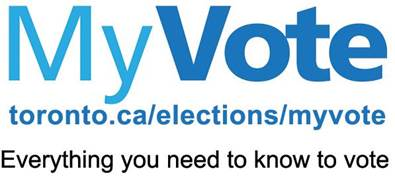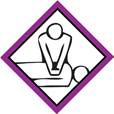Health and Safety
Wednesday, July 15, 2015 From April 1 of this year to March 31,
2016, Ontario Ministry of Labour inspectors are visiting new small
businesses with fewer than 50 workers in industrial workplaces.
They’re checking to see that workplaces are complying with the
Occupational Health and Safety Act regulations, and that they have a
functioning Internal Responsibility System (IRS).
 A new member of the Tree of Life Family A new member of the Tree of Life Family
Congratulations to Nancy Jones and her husband Peter on the birth
Sally, Rhonda, Kelly and Joanne.
 Reminder:
Plan your 2016 vacation time as soon as possible Reminder:
Plan your 2016 vacation time as soon as possible
Happy March! There are the 10 months left to use your 2016
vacation time. This is a friendly reminder to use your allotted time
off throughout the calendar year. Please work with your Manager to
help set up a successful vacation tracking year. All vacation
entitlements must be booked and used by December 31, 2016.
Please reach out to your Manager to discuss what your 2016
entitlements are.
Managers: Please ensure all your employees are aware of their
entitlements, how to request time off and how to plan ahead to
ensure all time off is used by December 31.
2016 Performance Reviews due September 30, 2016
All reviews must be completed no later than. Contact Human
Resources if you have any questions about completing the forms.
Videos are available on "How to conduct a Performance Review" and
how to complete the forms are available for both the employee and
management. Remember the review is everyone's opportunity to share.
2015 Statutory Holidays

Standard Time begins Sunday, November 2, 2014 at 2:00:00
AM clocks are turned backward 1 hour - posted Oct 30, 2014
On the first Sunday in November which is the 2nd this year, daylight
saving time ends and the clocks "fall back" one hour. This happens
at 2am, so you should turn your clocks back one hour before you go
to bed on Saturday evening.
“Fall Back” suggests that one must set the clocks one hour back when
Daylight Saving Times (DST) ends. It is associated with the fall
(autumn) season because the DST schedule ends in the fall. The fall
season and the end of daylight saving time mark a period when the
days start getting shorter, with fewer hours of sunlight.
Records have shown that the phrase “spring forward, fall back” has
been in use at least as far back as early 20th century…..so please
remember to set your clocks back one hour, “ Fall Back!’” on Sunday,
November 2, 2014.
Remembrance Day is Tuesday November
11th, 2014- posted November 6, 2014
On remembrance day members of the armed forces (soldiers, sailors
and airmen) are commemorated for their service. The other common
name for this day is Armistice Day which marks the date and time
when armies stopped fighting World War I. on November 11th at 11am
in 1918 (the eleventh hour of the eleventh day of the eleventh
month). Some 100,000 Canadian soldiers died in the First and Second
World Wars.
http://www.veterans.gc.ca/iremember
Remembrance Day is not a statutory holiday in Ontario. All
government buildings fly the Canadian flag this day and people
remember those who fought for Canada during a two minute silence at
11am. Many people wear poppies before and on Remembrance Day to show
their respect and support for Canadian troops. Poppies are generally
handed out free but often a voluntary donation is given in exchange.
In the USA this day is called Veteran's Day and is also observed on
November 11.
Standard Time begins Sunday, November 2, 2014 at 2:00:00 AM
clocks are turned backward 1 hour - posted Oct 30, 2014
2014 Toronto Municipal Mayoral Election is October
27th...the Voting Day! - posted Oct 15, 2014
 2014
Voters’ Guide for Ontario Municipal and School Board Elections 2014
Voters’ Guide for Ontario Municipal and School Board Elections
Advance vote begins today, and will run for six continuous days
from 10 a.m. to 7 p.m., ending October 19. There will be one voting
place in each of the 44 city wards. Also, regardless of where you
live in the city, you can vote at City Hall from October 14 to 17.

http://www1.toronto.ca/wps/portal/contentonly?vgnextoid=d712c36902f5d310VgnVCM1000006cd60f89RCRD
Find everything you need for voting in Toronto's municipal election.
From voter qualifications and identification to getting on the
voters' list, the voting equipment that they use and making
contributions. Bring voter info card & …than identify your voting
place and use MyVote to find your voting place.
THREE NEW LEAVES OF ABSENCE ADDED TO THE EMPLOYMENT
STANDARDS ACT, 2000 EFFECTIVE OCTOBER 29, 2014
On April 29, 2014, the Ontario Legislature passed Bill 21, the
Employment Standards Amendment Act (Leaves to Help Families),
2014. Royal Assent was given on the same day. Bill 21 will
amend the Employment Standards Act, 2000 (the "Act")
to add three new job-protected leaves of absence effective
October 29, 2014 - family caregiver leave, critically ill child
care leave and crime-related child death or disappearance leave.
The new leaves are in addition to existing leaves of absence
available to employees under the Act, and can be used in
conjunction with those other leaves if the circumstances of the
leave qualify for more than one type. A list of leaves now
available under the Act is appended below.
The most significant change that will be of concern to employers
is that both the new family caregiver leave and the new
critically ill child care leave will permit employees to take
the leaves in periods of less than full weeks. This may create
scheduling difficulties for employers should an employee be in
the unfortunate position of needing to make use of the leave.
FAMILY CAREGIVER LEAVE
Employees will be entitled to up to eight weeks of leave per
calendar year to provide care or support to specified family
members (not including aunts, uncles, nieces, nephews or
cousins, but including the potentially broad category of "a
relative who is dependent on the employee for care or
assistance"), where a qualified medical practitioner has issued
a certificate stating that the family member has a "serious
medical condition."
Employees are not required to take the leave in complete weeks
and no minimum period of service is required before employees
become entitled to take this leave. Employees must notify their
employer in writing of their intent to take the leave, and
employers are entitled to request copies of the medical
certificate. "Serious medical condition" has not been defined;
however, the Bill does state that it can include chronic or
episodic conditions.
CRITICALLY ILL CHILD CARE LEAVE
Employees will be entitled to up to 37 weeks of leave to provide
care or support to a critically ill child of the employee. The
leave is not required to be taken in complete weeks. To qualify
for the leave, the employee must have been employed by his or
her employer for at least six consecutive months. "Child" for
the purposes of this leave includes a child, step-child, foster
child, or a child who is under legal guardianship, and who is
under 18 years of age.
In addition, the child in question must meet the definition of
"critically ill" - i.e. his or her baseline state of health has
significantly changed and his or her life is at risk as a result
of an illness or injury. Whether a child meets this definition
is to be determined by a qualified medical practitioner, who is
required to provide a certificate which states that the child is
critically ill requiring the care or support of one or more
parents and sets out the period in which the care or support is
required.
Employees intending to take this leave must provide their
employer with both notification in writing as well as a written
plan that sets out the weeks in which the leave will be taken.
If requested, the employer is entitled to a copy of the medical
certificate qualifying the employee for the leave. Changes in
the plan's timelines must be made known to the employer in
writing, and are permissible only in the event that all of the
requirements of the section remain met. The Bill also contains
further provisions regarding extending the leave, limitation
periods, and courses of action to take in the event that more
than one child is critically ill or a child dies.
CRIME-RELATED CHILD DEATH OR DISAPPEARANCE LEAVE
Bill 21 creates a new category of leave of up to 52 or 104 weeks
for the disappearance or death of a child that is a result of a
crime. "Child" is defined to include a child, step-child, or
foster child who is under 18 years of age. "Crime" is defined as
an offence under the Criminal Code, except as prescribed.
In order to be entitled to the leave, an employee must have been
employed by the employer for a minimum of six consecutive
months.
Employees will be entitled to up to 104 weeks of absence in the
case of a child's death, commencing the week the child dies, if
the death of the employee's child is the probable result of
crime. In the case of a disappearance due to a probable crime,
employees will be entitled to 52 weeks of leave, commencing the
week the child went missing. The Bill contains further
provisions in the event that a missing child is found dead or
alive or it is probable that the parent or child is involved in
the crime.
Employees must advise their employer in writing of their intent
to take the leave and provide a written plan of when they intend
to take the leave. The leave is generally required to be taken
in a single period, subject to limited exceptions.
EMPLOYMENT INSURANCE
Employees entitled to take critically ill child care leave may
also qualify for Employment Insurance ("EI") special benefits
for Parents of Critically Ill Children ("PCIC"). However, the EI
benefits do not perfectly mirror the leave entitlements under
the Act. There are different eligibility criteria
(including a requirement for a minimum number of qualifying
insurable hours), and if the employee chooses not to take the
leave in full weeks, he or she may not qualify for EI benefits
depending on his or her income.
Employees who are entitled to take the crime-related child death
or disappearance leave may be entitled to a Federal Income
Support for Parents of Murdered or Missing Children (PMMC) grant
from the federal government.
Employees would be best advised to consult directly with Service
Canada about their entitlements to EI benefits or to a PMMC
grant during the period of the leave.
CONCLUDING COMMENTS
As noted at the outset, the new leaves of absence have come into
force on October 29, 2014. Employers will need to consider how
to integrate the new leaves into existing leave entitlements
available to your employees under your organization's policies
and contracts, including collective agreements.
LEAVES OF ABSENCE UNDER THE EMPLOYMENT STANDARDS ACT, 2000
Pregnancy Leave
Parental Leave
Personal Emergency Leave
Family Medical Leave
Organ Donor Leave
Family Caregiver Leave
Critically Ill Child Care Leave
Crime-Related Child Death or Disappearance Leave
Reservist Leave
Emergency Leave,
Declared Emergencies
Canada’s Anti-Spam Law Comes into Force July 1st, 2014 -
Posted March 31, 2014
Canada’s Anti-Spam Law Comes into Force July
1st, 2014
Don't be fooled by its name. You don't need to be a spammer for
the legislation known as "Canada’s anti-spam law" or "CASL" to
regulate important elements of our business.
Many everyday activities, such as sending an email message to a
customer, operating a company website and making a mobile
application available for download, will soon be subject to new,
detailed rules that will likely require you to make significant
changes to your operational practices or face significant fines.

The new rules will be enforced by three regulators with active
enforcement offices and by the courts. Anyone who believes they
have been affected by our non-compliance will have standing to
commence a private action. Class actions are widely expected.
The time to prepare for the new rules is now!
The Government of Canada announced today that most of Canada’s
Anti-Spam Legislation (“CASL”) will come into force on July 1st,
2014. After that date, organizations will either have to have
the prior consent of intended recipients of “commercial
electronic messages”, or ensure that the messages being sent, or
the recipients of those messages, are exempt from the
requirements to get consent.
Expansion of Exclusions for Consent Requirements:
The Regulations exclude commercial electronic messages from all
provisions of CASL if:
- they are sent within an
organization;
- they are sent between
organizations that already have a relationship, if the message
concerns the activities of the organization to which the message
was sent;
- they are sent on platforms
where identification and unsubscribe information is
conspicuously published and readily available to users, and
where duplication of an unsubscribe or identification message
would be repetitious;
- they are sent and received
within limited access secure and confidential accounts (such as
messages which a bank might send to an account holder);
- they are sent in response
to a complaint, inquiry or request;
- they are sent on behalf of
registered charities for fundraising purposes; or
- they are sent on behalf of
a political party or candidate and have as their main purpose
the solicitation of donations.
Delayed Implementation;
In an attempt to alleviate some of the impact on business that
might occur if all of CASL come into effect at once, the
Government has also delayed the implementation of two important
elements of the legislation. First, the provisions of CASL
which govern the installation of computer programs on a person’s
computer system in the course of a commercial activity without
consent, are delayed until January 15, 2015.
Second, the coming into force of the provisions which give
individuals a right to sue an organization for a breach of CASL,
are delayed until July 1, 2017.

Next Steps;
Organizations who have been putting off seeking consents which
would allow them to continue to send legitimate commercial
electronic messages to, for example, potential customers or
industry contacts, should be developing and implementing a
consent campaign in earnest, so that consents have been obtained
prior to July 1stof next year.

Impact Analysis:
In anticipation of this new law, company must be aware of the
forgoing requirements, and should begin (or continue) the
process of ensuring that our internal policies and procedures
comply with same. To this end, it will also be important for
identify the following:
http://www.ic.gc.ca/eic/site/030.nsf/eng/00271.html
(i) How will Canada’s Anti-Spam Legislation (“CASL”) impact the
way we are currently doing business?
(ii) What processes, procedures, programs &/or policies (if any)
should be reviewed and revised?
(iii) Please share the findings of your review in writing with
your GMs, SVP .
Take Our Kids to Work Program: Wednesday November 6,
2013 - Posted November 4, 2013
.gif)
Research suggests that today’s students will have multiple
careers over the span of their working years. They will need to
master both new technologies and complex social and organizational
systems. They will also need to be prepared with the educational
tools and experiences that will be necessary to succeed in
tomorrow's workplace.
On the first Wednesday of November every year, The
Learning Partnership holds Take Our Kids to Work™ day, where more
than 200,000 Grade nine. Take Our Kids to Work™ is The Learning
Partnership’s signature program, now in its 19th year,
provides Grade nine students with the opportunity to experience and
learn about the world of work as they begin to explore possible
career paths.
http://www.thelearningpartnership.ca/TOKW
More than 250,000 Grade nine students and at least 75,000 businesses
and organizations nationwide participate in Take Our Kids to Work
day annually. The Learning Partnership began running this program in
1994 in Ontario and it has since grown into a national program that
reaches students in all provinces and territories across the
country.
Benefits of Take Our Kids to Work Program
are….
For Students, it’s an opportunity to:
- Understand the importance
of staying in school by learning first-hand what skills are
required in today’s workplace.
- Start exploring career
options in a practical way and gain a better understanding of
just how many career choices are open to them.
- Develop an appreciation for
their parents’ careers and roles in supporting their families.
For Parents, it’s preparing your child for the future. You
can:
- Participate in a shared
experience with your child.
- Begin a career dialogue
based on actual experiences.
- Enrich your child’s
experience with discussions before, during and after the
workplace visit.
Employers are provided with the opportunity to demonstrate
their commitment to educating young people about:
- The Students’ first
experience in the workplace so it’s important that we show them
an early example of how workplaces conduct themselves in a
business environment taking appropriate customer care measures
as well as healthy and safe precautions.
- By supervising students all
day while they are at the workplace site and allowing the
Students to undertake tasks and experiences for which they have
been properly oriented and are aware of any related health and
safety concerns gives them an sense of their parents’ working
lives and the skills required to perform some of the jobs.
- During this day, students
should be encouraged to ask questions, and comment on situations
they observed during the day and also gives the Employer
opportunity to discuss various Student Co-Op Programs we have
available.
- Hopefully this day will
provide the Student with a positive glimpse into the exciting
world of Automotive Retailing and Serving Industry which may
encourage Students to learn more about a future Automotive
Career.
NEW CPR PROCEDURE -
posted July 20, 2012
 Everyone
should watch this - in case I need you. I've watched it - in case
you
need
me. Everyone
should watch this - in case I need you. I've watched it - in case
you
need
me.
 PLEASE
watch - and then share with your Safety Committee Members. This
short video illustrates the best demonstration and gives the
simplest explanation of exactly what to do if someone near you
collapses and is presumably having a heart attack. You could very
well save the life of an employee, customer, friend or loved one.
Someone you share this video with might save your life..! PLEASE
watch - and then share with your Safety Committee Members. This
short video illustrates the best demonstration and gives the
simplest explanation of exactly what to do if someone near you
collapses and is presumably having a heart attack. You could very
well save the life of an employee, customer, friend or loved one.
Someone you share this video with might save your life..!
http://ahsc.arizona.edu/node/730
|